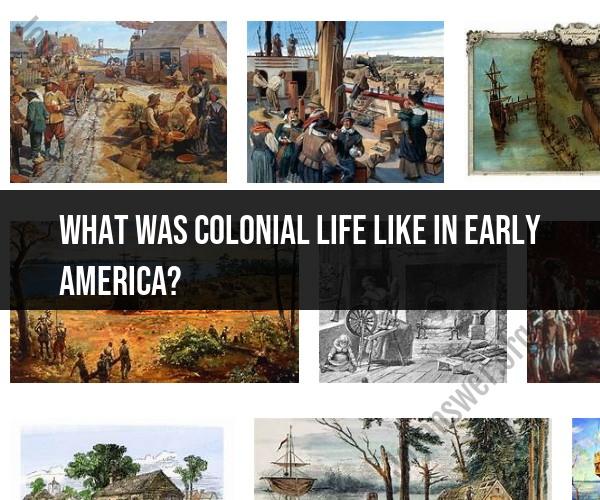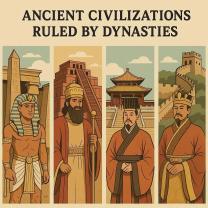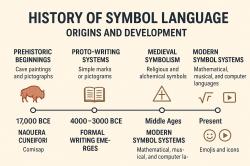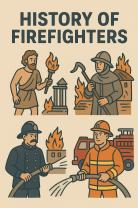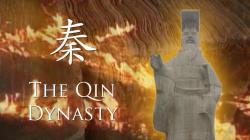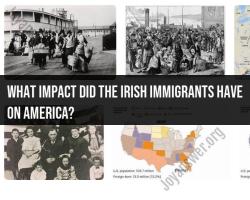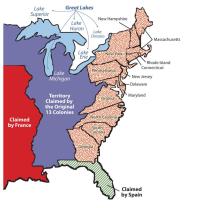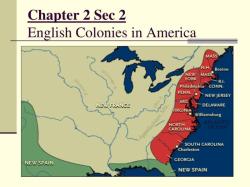What was colonial life like in early America?
Colonial life in early America, spanning the 17th and 18th centuries, was characterized by a unique blend of challenges, opportunities, and cultural diversity. Here are some historical insights into colonial life during this period:
Diverse Colonies: The American colonies were diverse in terms of geography, climate, and culture. The thirteen original colonies were established by different European powers, including England, France, Spain, the Netherlands, and Sweden. Each colony had its own distinct characteristics.
Agriculture and Subsistence Farming: Agriculture was the backbone of colonial economies. Colonists grew crops such as corn, wheat, tobacco, rice, and indigo, with the specific crops varying by region. Subsistence farming was common, and families often produced their own food, clothing, and other necessities.
Trade and Commerce: Trade played a crucial role in colonial life. Many colonists engaged in trade, both domestically and internationally. Port cities like Boston, New York, and Charleston thrived as centers of commerce. The triangular trade route facilitated the exchange of goods, including slaves, between Africa, the Americas, and Europe.
Religious Diversity: Colonists came to America seeking religious freedom. Different colonies attracted various religious groups. For example, the Puritans settled in Massachusetts, Quakers in Pennsylvania, and Catholics in Maryland. Religious tolerance and religious establishment varied from colony to colony.
Colonial Society: Colonial society was hierarchical. There were distinctions based on social class, wealth, and race. The elite consisted of wealthy landowners and merchants, while indentured servants and enslaved Africans occupied the lowest rungs of society.
Education: Education was important to many colonists, particularly in New England. The establishment of schools, including Harvard College in 1636, reflected the value placed on education. However, formal education was limited for many due to factors such as geography and social class.
Native American Relations: Relations with Native American tribes varied across the colonies. Some colonists established trade alliances and peaceful coexistence, while others engaged in conflict and land disputes. The expansion of colonies often led to the displacement of Native American populations.
Family Life: Colonial families were typically large and extended, with multiple generations living under one roof. The family unit played a central role in daily life and was responsible for economic activities, childcare, and education.
Colonial Government: Most colonies had representative assemblies or colonial legislatures where colonists had a voice in governance. However, the extent of self-governance varied, and some colonies had royal governors appointed by the British monarchy.
Revolutionary Seeds: The seeds of the American Revolution were sown during the colonial period. Issues such as taxation without representation, British interference in colonial affairs, and the desire for greater autonomy and self-determination eventually led to the American Revolutionary War.
Colonial life in early America was marked by a mix of traditions from the Old World and the development of a unique American identity. Over time, these colonies would grow and evolve into the United States of America, shaped by their experiences and the challenges they faced during the colonial era.
Daily Life in the American Colonies in the 1600s-1700s
Daily life in the American colonies in the 1600s and 1700s varied depending on the region, the colony, and the social class of the individual. However, there were some common aspects of daily life that were shared by many colonists.
Most colonists lived on farms and worked from sunrise to sunset. They grew their own food and raised livestock. They also made their own clothes and tools. Colonists who did not live on farms often worked as artisans, merchants, or tradesmen.
Colonists attended church regularly and religion played an important role in their lives. They also enjoyed social activities such as barn dances, quilting parties, and sporting events.
Challenges of Early Colonial Settlement and Society
The early colonists faced many challenges, including:
- Disease: Disease was a major problem for the early colonists. Many colonists died of diseases such as smallpox, malaria, and yellow fever.
- Food shortages: Food shortages were also a common problem. The colonists often had difficulty growing enough food to feed themselves and their families.
- Harsh weather conditions: The weather conditions in the colonies could be harsh, especially in the winter. The colonists often had to deal with cold weather, snow, and storms.
- Native Americans: The colonists also had to deal with the Native Americans who already lived in the land. The colonists and Native Americans often clashed over land and resources.
Developing Economies and Local Governance in Colonial America
The colonies developed their own economies, which were based on agriculture, trade, and manufacturing. The colonists also developed their own systems of local government.
The colonies traded with each other and with Europe. The colonists exported goods such as tobacco, rice, and indigo. They imported goods such as cloth, tools, and manufactured goods.
The colonies also developed their own systems of local government. Each colony had its own legislature, which made laws for the colony. The colonies also had their own governors, who were appointed by the British king.
The colonial economy and society grew and developed over time. By the 1700s, the colonies had become a thriving and prosperous region.
Here are some additional details about daily life in the American colonies in the 1600s and 1700s:
- Homes: Most colonists lived in small, wooden homes. The homes were often one room and had few amenities.
- Food: The colonists ate a variety of foods, including corn, wheat, beans, potatoes, and meat. They also ate fruits and vegetables.
- Education: Education was not compulsory for the colonists. However, many colonists did attend school. The schools were often run by churches.
- Transportation: The colonists traveled by foot, on horseback, and by wagon. They also traveled by boat.
- Entertainment: The colonists enjoyed a variety of entertainment activities, such as dancing, singing, and playing games.
The American colonies were a diverse and vibrant region. The colonists faced many challenges, but they also built a prosperous and successful society.
